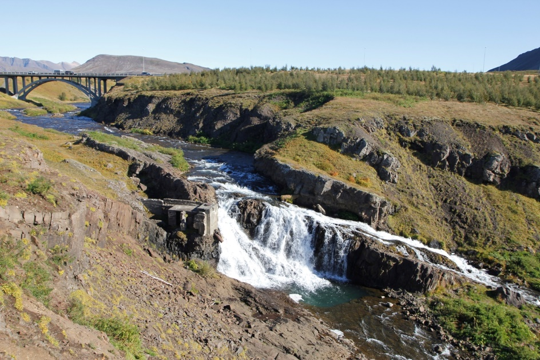Vinna við nýjar heimasíður Umhverfis- og orkustofnunar og Náttúruverndarstofnunar er í gangi. Heimasíða Umhverfisstofnunar er virk á meðan vinnunni stendur. Information in English
Tungufoss, Mosfellsbaer

The Minister for the Environment has, at the proposal of the municipality of Mosfellsbær and after receiving the opinion of the Environment Agency and the Icelandic Institute of Natural History, decided to protect Tungufoss and its immediate surroundings. The area is protected as a natural monument in accordance with Paragraph 1(2) of Article 53 of the Nature Conservation Act No. 44/1999.
Tungufoss is a beautiful waterfall in the lower part of Köldukvísl, opposite Leirvogstunga, and the waterfall is named after the farm. The remains of a home power station that was built in 1930 by the farmer in Leirvogstunga and his brothers can be seen by Tungufoss. The station produced electricity for the farm until 1958. There are two beautiful pools below Tungufoss: Kerið, just below the waterfall, and Klapparhylur a little further. The waterfall’s vicinity is popular for outdoor activities, and the nature reserve covers an area of 1.4 hectares.
The aim of the protection of Tungufoss as a natural monument is to preserve the waterfall itself, as well as cultural remains within the area. The area has a high outdoor activities value and is popular, both with the townsfolk and other visitors, and it is important to strengthen its outdoor recreational and educational value.